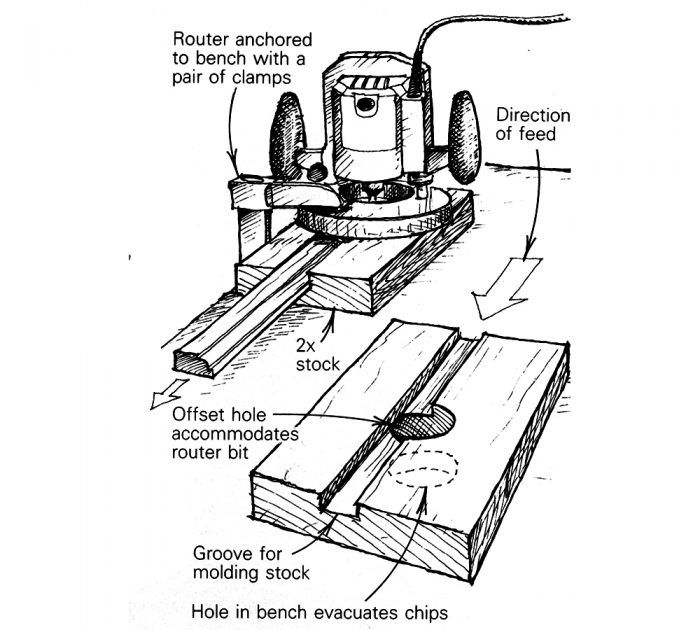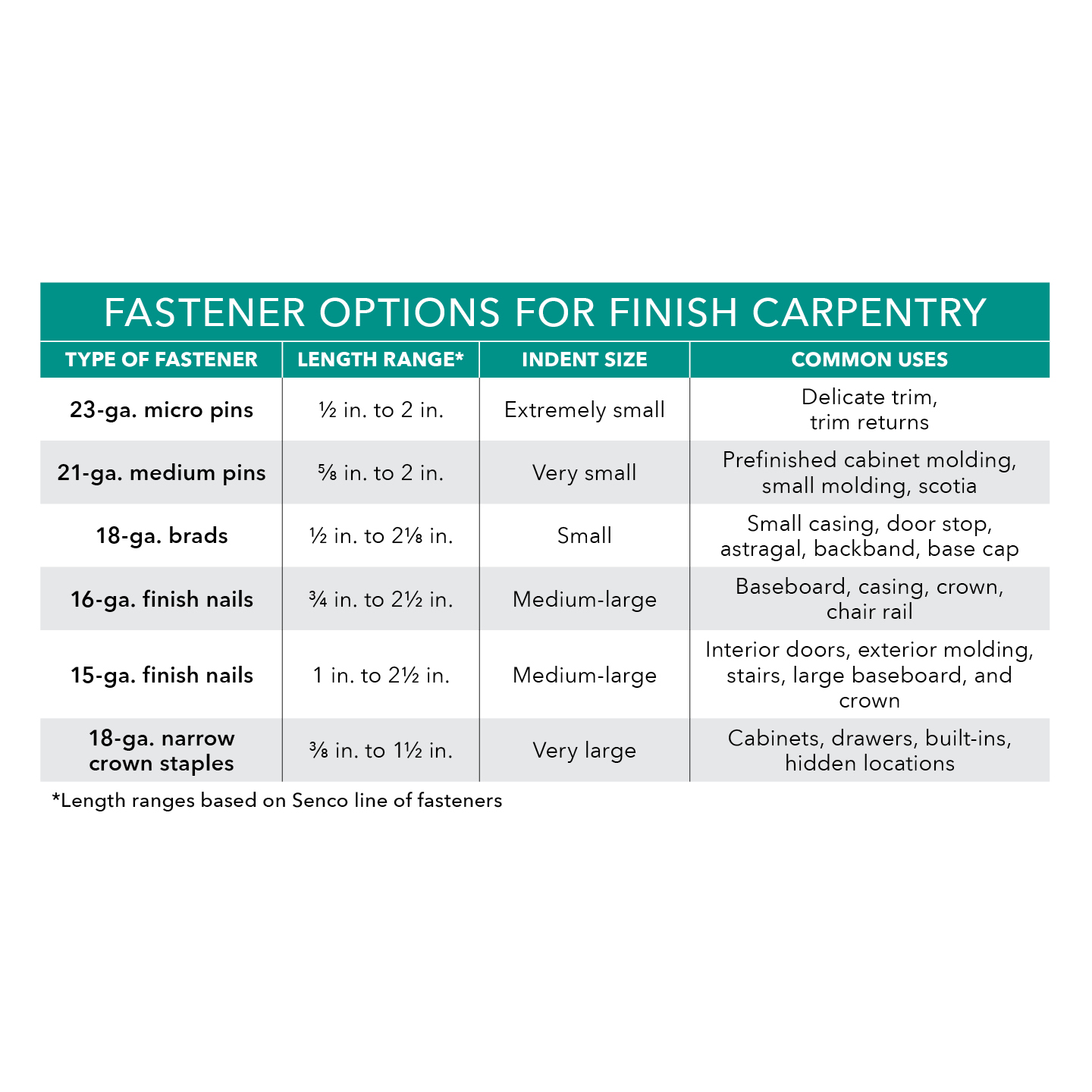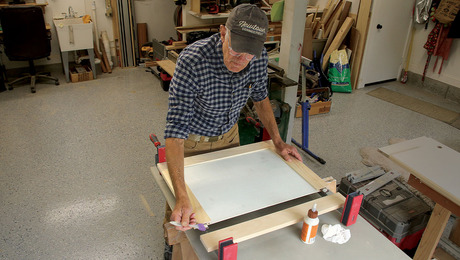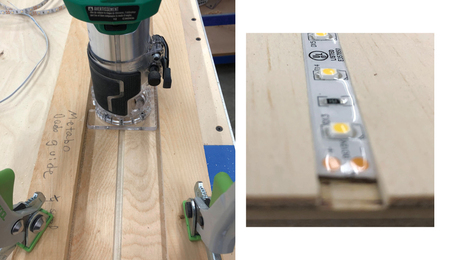
I needed a special molding to complete a baseboard detail, but my router table was several hundred miles away on another job. Fortunately, the situation forced me to come up with an alternative method for site-milling trim stock. I think my new method is faster, more accurate and safer than using a router table — especially if the moldings are narrow and thin.
As shown in the drawing, I used a scrap of 2x stock about 1 ft. long and about the width of my router’s base. I cut a lengthwise groove near the middle of the 2x, just a pinch larger than the depth and width of my molding stock. Then I used a hole saw to bore a 1-1/2-in.-dia. hole that is offset from the center of the groove. This hole accommodates the router bit, and it should be to the left of the groove as you face the jig. This is to ensure that the router bit, which turns clockwise, will be turning into the work as you feed the stock into it. Next, I bored a similar hole in the top of my job-site workbench to allow the wood chips an escape route.
I positioned my router over the hole in the jig and anchored the router to the table with a pair of clamps. The clamps were arranged on opposite sides of the router’s base, in line with the groove in the 2x stock. By sighting down the groove I could easily adjust the router, both vertically and horizontally, until I had the bit in the exact position that I needed for the molding profile. Cutting the moldings is a simple matter of turning on the router and feeding the stock into the groove. In a few minutes I had hundreds of feet of molding. And because the stock was captured in the groove of the jig under the base of the router, my fingers never got near the cutters.
—Bill Young, Berkeley, Calif.
Edited and illustrated by Charles Miller
From Fine Homebuilding #51






























View Comments
Congratulations on reinventing 1950. Its a great technique.
I think it's a great tip and safer is nice for sure. Don't let the snarky 1950 tip get to you! Many years ago before I had a miter saw my wife and I bought a house and installed over a 1000 s/f of oak floor. Your jig reminds me of a jig I fabricated to use my circular saw like a sliding saw to cut flooring, and even though today I would use a miter saw for the same job, the jig I made was safer not much slower.
Twenty-five years ago I made a saw guide jig like CO's for cutting vinyl on a Habitat Blitz Build site.
I think the point of these posts is that quick, simple job-site jigs are relatively easy, productive & often more accurate. Many craftspeople are creative enough to come up with something safe and useful.
I recommend John Carroll's book, "Working Alone," because he teaches you to think about simple tools and jigs that will make your work better or faster. Why use two people for a repetitive job that can be done by one with a $20 jig? For example, he drilled a couple of holes in his Speed Square so he could screw it in position to hold the far end of a board, in a situation where he couldn't just use a clamp.